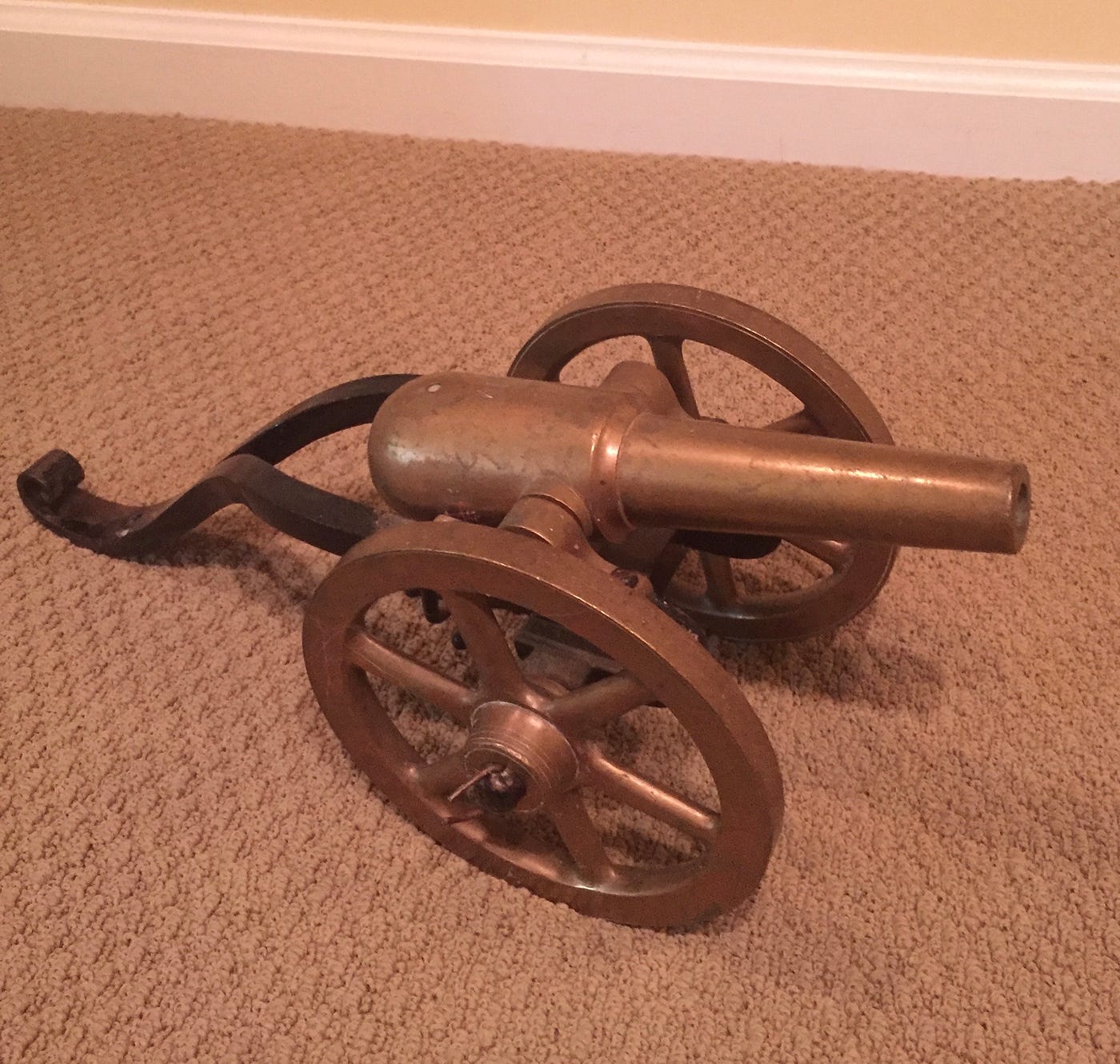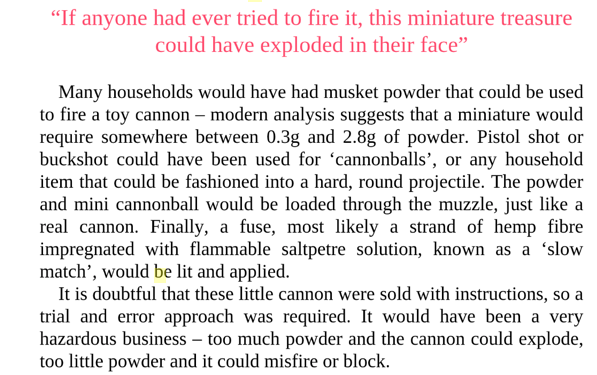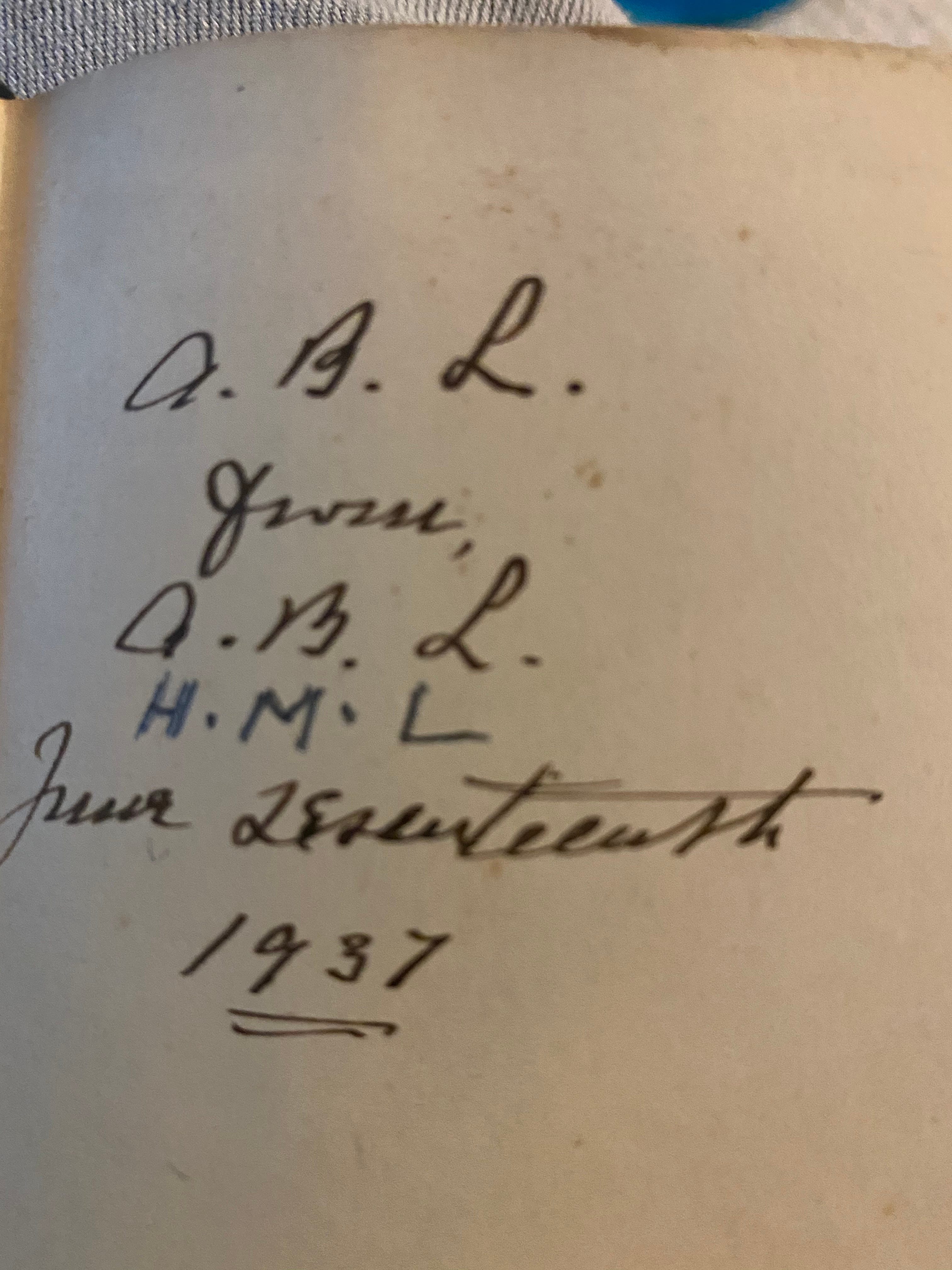My Great-Grandfather’s Toy Cannon
My Great-Grandfather’s Toy Cannon
I’m not sure that “toy” is the right word, however, that is the word my father and his mother used.
History

The picture above is a Lawrence family heirloom. I’m not sure that “toy” is the right word, however, that is the word my father and his mother used.
I know that it was a gift to Herbert Myron Lawrence, my father’s grandfather. My father gave it to me and I, in turn, have given it to my oldest daughter.

I do not know how old Herbert was when he received this. He was born in 1851 and died in 1937, which does not identify the time frame of the gift. However, my father did say it was a gift, not something he bought for himself. That could be a misunderstanding. The cannon is engraved with HML initials.
One reference I found asserts:
In fact, toy cannons date back to the American Civil War and before, and not only were they popular toys for children, they were remarkably dangerous. Many of the examples of early toy cannons actually have holes in their barrels from small explosions — these cannons were fired just like a real cannon and were not exactly the safest toys!
A Google book search turned up Britain’s Secret Treasures, which had this to say:

This is, or at least was, a working cannon. My sisters, who are older than I am, remember that my father fired it off at least once in the 1940s. He later told me that he didn’t think it was wise to do that again. As I remember my nephews shoving various items down its barrel, I would have to agree.
I played with it also, but what I remember most is that I would regularly disassemble it and lovingly polish all of its brass.
My sister recently found a book on sketching on her shelves. The inscription seems to suggest that that someone with initials A.B.L. (probably Anna Raymond Beardsley Lawrence, his wife) bought a book and H.M.L. later took it for his library.


Herbert Myron was an artist of some renown. From Wikitree:
[Herbert Myron Lawrence] Lived in Worcester, Massachusetts as a boy. Herbert was a designer, decorator, and artist. He worked as chief designer for McKim, Meade & White. He was an interior designer for the White House under McKinley, the Toronto Parliament Building, the Boston Public Library (ceilings), the Rhode Island State Capitol Building, ceilings for the Pennsylvania Railroad Station, the Lincoln Memorial, the Bank of Montreal, the Samuel Clemens house in Hartford, and many large homes in Newport, Rhode Island. He was in charge of all design and decoration for the Panama Pacific Exposition in San Francisco, 1915. He lived for many years in California. He traveled in Europe and Japan collecting for museums.
Askart has a different birthdate, but a similar biography:
Born in Worcester, MA on Nov. 19, 1861. Lawrence came to San Francisco in the 1880s and established a studio. One of his notable achievements was the fresco on the ceiling in the Flood Mansion (now the Pacific Union Club). At the turn of the century, he left San Francisco and returned in 1915 to achieve fame by his revolutionary color effects on the buildings and roofs of the PPIE. His Court of the Ages at the Expo was one of his best works. While in San Francisco he also did the interiors of the Public Library and the Granada Theatre. Lawrence died in Sharon, MA on Sept. 4, 1937.
References:
Comments
Post a Comment